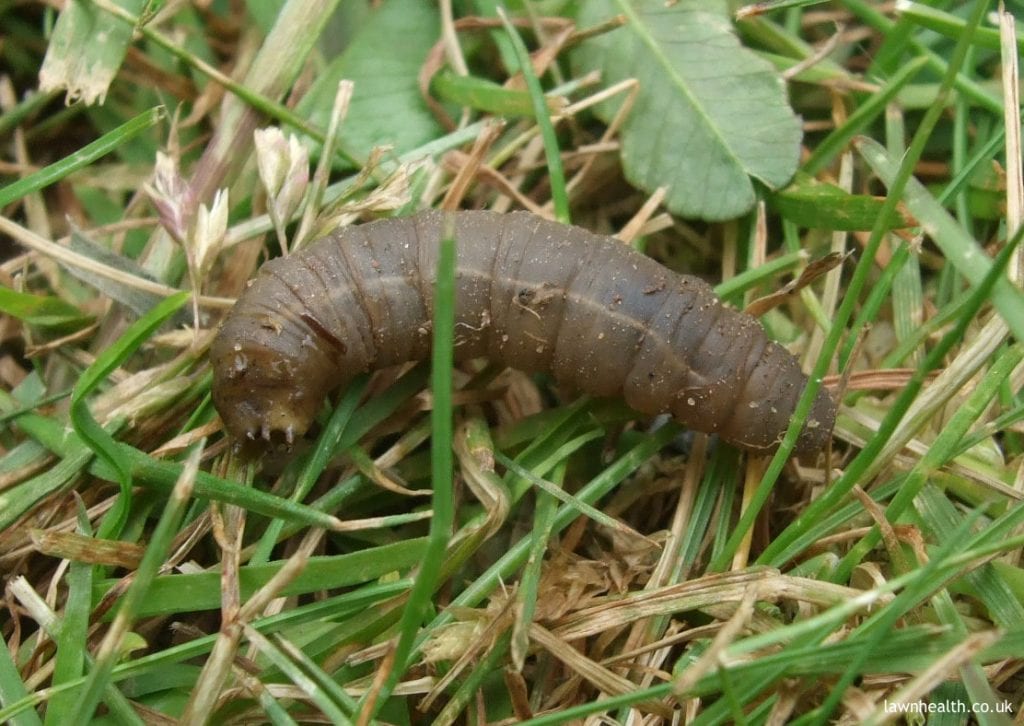
Lawn Pests and Diseases
How common are lawn diseases and pests?
Probably more common than many people realise. However, there often go unnoticed even though we might be aware that the lawn is not looking too good. With experience, they become easier to spot and often coincide with certain times of the year. The good news is that most lawn pests can be remedied before they do their worst damage. But there is no doubt that they can have a very destructive impact on an otherwise healthy lawn.
Leatherjackets
Yellow and brown patches can indicate the presence of leather jackets. This is the leatherjackets eating the roots of the grass. They are easily seen if one lifts the top of the turf.
Leatherjackets are the larvae of daddy-longlegs or crane fly which lay about 300 eggs in the autumn. They hatch within a few weeks. They also encourage other predators such as badgers, foxes and birds to dig the lawn looking for leatherjackets to eat.
Leatherjackets are controlled biologically by putting nematodes into the lawn usually in June, July and August in the South West. Moist soil is preferable and we recommend spiking the lawn before application so that the nematodes get to the area where the leatherjackets are.
Chafer grubs
Phyllopertha Horticola or chafer grubs are larvae of the chafer beetle and they eat the roots of lawns and cause yellow patches in the spring and autumn. The chafer beetle appears May-July and begins to lay its eggs on the soil. They are capable of lying dormant during winter only to re-emerge in the following spring. They are easily identified as they have white curved bodies and light brown heads with several pairs of legs near the head.
Chafer grubs also encourage predators and the damage this causes can be the most telling sign of chafer grubs. They are controlled biologically using nematodes but left uncontrolled can survive up to 5 years. We would always recommend treating them when they are found as it will become a more severe problem if left.
Red Thread Disease
A common lawn fungus occurring mainly in the summer months which, as the name suggests, is identified by pink and red threads known as hyphae on areas that look dry or brown. Grass can begin to die as soon as one to two days after the infection starts.
It is possible to treat red thread with a lawn fungus treatment and this might be appropriate in some cases. It is best to seek advice though because red thread can be symptomatic of soil fertility problems, too much thatch in the soil or poor drainage. Other courses of action can more effectively treat the primary cause and reduce the chances of reinfection.
Dry patch
Typically dry patches, as the name suggests, are patches of dry lawn which don’t recover even after rainfall following a dry period. The exact causes of dry patches are complicated and often difficult to diagnose. It can be a combination of previous disease infection or pest infestation compaction and soil type. However, it is often associated with fungal infection and too much thatch.
Therefore paying particular attention to controlling the build-up of thatch through aeration and scarification is a very good means of resisting dry patches in the first place. Wetting agents can be used to rehydrate the soil but renovation and reseeding of areas infected may be necessary
Other lawn fungi
Lawns can become infected with many types of fungus. Many are harmless but it is worth getting an expert opinion as some can cause damage to your lawn which will need renovation, treatment or repair.
Fungus to look out for in addition to those above include rust, fairy rings, leaf blight, brown patch, take-all, Pythium blight, anthracnose and dollar spot.
Diagnosis and treatment of lawn pests and disease
All these problems can be rectified by accurately identifying the correct problem and deciding on the best action plan. This varies between the application of professionally available products approved for use and control in specific circumstances. Often following an essential annual treatment programme is the best way to discourage many of these problems in the first place. A healthy lawn is far more resistant to pests and disease.
Enhancing soil fertility by improving nutrition through the regular application of fertilizer. Aeration and scarification using professional equipment rather than domestic machines are well with it as they will relieve compaction, give grassroots access to water, and nutrients and remove excess thatch. These basic cultural treatments are at the heart of good lawn care.
GreenHeart will conduct a free Lawn Health Check and recommend the most appropriate and cost-effective courses of action for all lawn care problems. Book your Lawn Health Check today.
